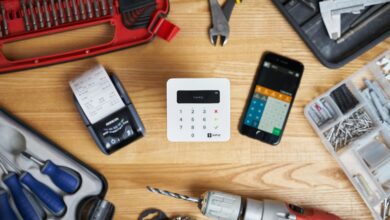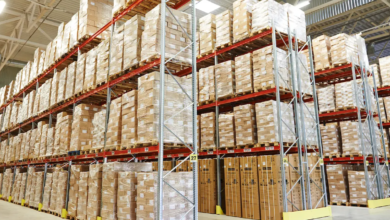The Complete Guide to Furnace Maintenance, Common Issues, and Long-Term Heating Efficiency

As the colder seasons approach, your furnace becomes one of the most essential components of a safe and comfortable home. It’s responsible for heating your indoor spaces, maintaining proper humidity levels, and keeping your energy bills in check. Like any complex system, however, your furnace requires regular care, and when issues arise, timely attention is critical. Understanding the basics of furnace systems, recognizing early warning signs, and knowing when to seek furnace repair in Tampa can prevent costly breakdowns and help extend the life of your heating equipment.
This guide covers everything a homeowner should know about furnace care—from how furnaces work to identifying potential problems, improving efficiency, and evaluating when to replace versus repair.
How a Furnace Works: A Basic Overview
A furnace functions as the heart of a central heating system. It operates by heating air and then distributing it throughout the building via ducts and vents. The type of fuel a furnace uses—natural gas, propane, oil, or electricity—determines how it generates heat.
Here’s how the process generally works:
- Thermostat Signals Heating Need – The furnace turns on when the thermostat detects that the temperature has dropped below the set level.
- Ignition System Starts – Depending on the model, this could be a pilot light or electronic ignition.
- Heat Exchange Occurs – Burners ignite and warm the heat exchanger.
- Air Blower Circulates Air – The furnace fan pushes air over the heat exchanger and distributes it through ducts.
- Exhaust Is Ventilated – Gases are expelled through a flue or vent pipe.
Understanding this process helps you better diagnose when something isn’t working correctly—and whether the problem warrants a full furnace repair or a simple tune-up.
Signs Your Furnace Might Need Professional Attention
Most homeowners don’t think about their furnace until it stops working. However, your system often gives you signs before a full breakdown occurs. Recognizing early warning indicators can help you avoid costly emergency repairs.
1. Uneven Heating or Cold Spots
If some rooms are colder than others or you’re constantly adjusting the thermostat, it may indicate airflow issues or a failing component within the system.
2. Increased Utility Bills
A sudden spike in your heating bill could mean your furnace is working harder than it should, often due to reduced efficiency or malfunctioning parts.
3. Unusual Noises
Clanking, banging, or whistling sounds can be a sign of loose components, blower issues, or burner problems.
4. Yellow Pilot Light
A properly functioning gas furnace should have a blue pilot light. A yellow flame can indicate carbon monoxide or ventilation issues—both of which are serious concerns.
5. Frequent Cycling
If your furnace turns on and off repeatedly in short intervals, it may be a sign of a clogged filter, bad thermostat, or even an oversized furnace.
When these issues arise, timely furnace repair is crucial. Ignoring them can lead to further damage, system failure, or even safety hazards.
Regular Maintenance: The Key to Long-Term Furnace Health
One of the most effective ways to prevent unexpected breakdowns is to invest in regular furnace maintenance. Scheduled inspections and tune-ups not only improve system efficiency but also help detect minor issues before they escalate into major problems.
What Should Routine Maintenance Include?
- Filter Replacement: Dirty filters restrict airflow and cause the system to overwork. Replace them every 1–3 months.
- Inspecting the Heat Exchanger: Cracks can lead to carbon monoxide leaks.
- Checking and Cleaning Burners: Ensures efficient combustion and proper heat output.
- Testing the Thermostat: Confirms accurate temperature control.
- Lubricating Moving Parts: Reduces friction and prevents wear and tear.
- Checking Electrical Connections: Ensures safety and efficiency in electric furnaces.
Routine maintenance is also a great opportunity to get a professional opinion on whether your system is operating at peak efficiency or if you’re likely to need a furnace repair in the near future.
DIY Troubleshooting Tips Before Calling a Technician
Not every furnace issue requires professional help. There are several basic steps you can take before scheduling a service appointment:
- Check the Thermostat: Make sure it’s on and set to the correct mode and temperature.
- Inspect the Filter: Replace it if it’s visibly dirty.
- Look at the Circuit Breaker: Ensure the furnace hasn’t tripped the breaker.
- Inspect Air Vents: Make sure they’re not blocked by furniture or debris.
- Reset the System: Some furnaces have a reset button you can press if the unit shuts down unexpectedly.
If you’ve tried these steps and the furnace is still not functioning properly, it’s time to call in a professional for a full diagnostic and possible furnace repair.
When to Repair vs. When to Replace
Homeowners often face a dilemma: should they repair an aging furnace or invest in a new one? While repairs are usually less expensive in the short term, there comes a point when replacement is more cost-effective and reliable.
Consider Repair If:
- The unit is less than 10 years old.
- Repairs are infrequent and relatively inexpensive.
- The system is still under warranty.
- Your heating bills haven’t spiked significantly.
Consider Replacement If:
- The furnace is more than 15–20 years old.
- Repairs are becoming more frequent and expensive.
- The system struggles to maintain consistent temperatures.
- Your energy bills are rising steadily.
- The heat exchanger is cracked (a costly and dangerous issue).
A licensed HVAC technician can help you determine the best course of action based on a full inspection and your long-term goals.
Improving Energy Efficiency with a Furnace Upgrade
Whether you’re repairing or replacing, efficiency should be a top priority. Older systems often operate at 60–70% AFUE (Annual Fuel Utilization Efficiency), whereas modern systems can exceed 95%.
Here are ways to enhance furnace efficiency:
- Upgrade to a High-Efficiency Model: These use less fuel and produce more heat.
- Seal Duct Leaks: Prevent warm air from escaping before reaching living spaces.
- Improve Home Insulation: Better insulation reduces the burden on your heating system.
- Use a Smart Thermostat: These learn your schedule and adjust temperatures for optimal performance.
These strategies reduce environmental impact while saving you money in the long run, especially if you pair them with professional furnace repair in Tampa and maintenance services.
Understanding Furnace Types and Their Specific Needs
Different types of furnaces come with different maintenance and repair needs. Knowing what kind of furnace you have will help you anticipate potential issues.
Gas Furnaces
- Most common type
- Require regular burner cleaning and carbon monoxide monitoring
Electric Furnaces
- More affordable installation
- Fewer components, but higher operating costs
Oil Furnaces
- Less common but highly efficient
- Require frequent cleaning due to soot buildup
Each system type requires tailored service, so it’s important to work with a technician who is experienced in your specific furnace model.
Final Thoughts
Furnaces are often out of sight and out of mind—until they stop working. But with proper care, regular maintenance, and timely f, your system can continue to provide reliable and efficient heat for many years.
Investing in your furnace is investing in your comfort, safety, and long-term home value. Whether you’re dealing with uneven heating, strange noises, or simply an aging system, understanding your options and taking proactive steps can make all the difference.




